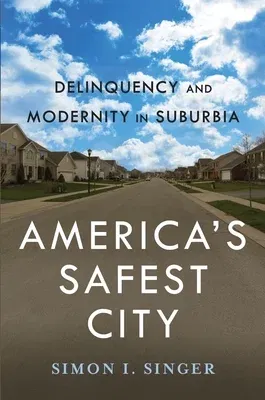Winner of the American Society of Criminology 2015 Michael J.
Hindelang Book Award for the Most Outstanding Contribution to Research
in Criminology
Since the mid-1990s, the fast-growing suburb of Amherst, NY has been
voted by numerous publications as one of the safest places to live in
America. Yet, like many of America's seemingly idyllic suburbs, Amherst
is by no means without crime--especially when it comes to adolescents.
In America's Safest City, noted juvenile justice scholar Simon I. Singer
uses the types of delinquency seen in Amherst as a case study
illuminating the roots of juvenile offending and deviance in modern
society. If we are to understand delinquency, Singer argues, we must
understand it not just in impoverished areas, but in affluent ones as
well.
Drawing on ethnographic work, interviews with troubled youth, parents
and service providers, and extensive surveys of teenage residents in
Amherst, the book illustrates how a suburban environment is able to
provide its youth with opportunities to avoid frequent delinquencies.
Singer compares the most delinquent teens he surveys with the least
delinquent, analyzing the circumstances that did or did not lead them to
deviance and the ways in which they confront their personal
difficulties, societal discontents, and serious troubles. Adolescents,
parents, teachers, coaches and officials, he concludes, are able in this
suburban setting to recognize teens' need for ongoing sources of trust,
empathy, and identity in a multitude of social settings, allowing them
to become what Singer terms 'relationally modern' individuals better
equipped to deal with the trials and tribulations of modern life. A
unique and comprehensive study, America's Safest City is a major new
addition to scholarship on juveniles and crime in America.
Crime, Law and Social Change's special issue on America's Safest City

